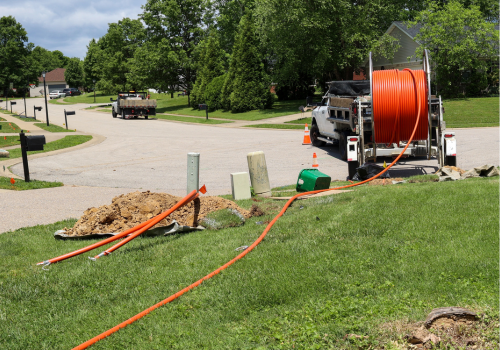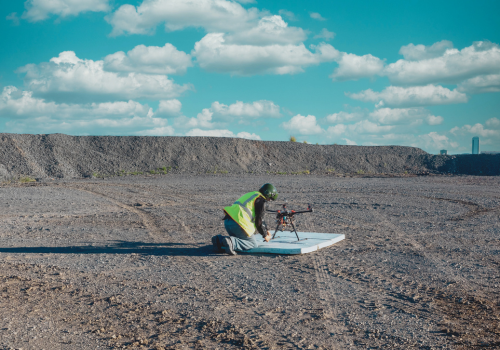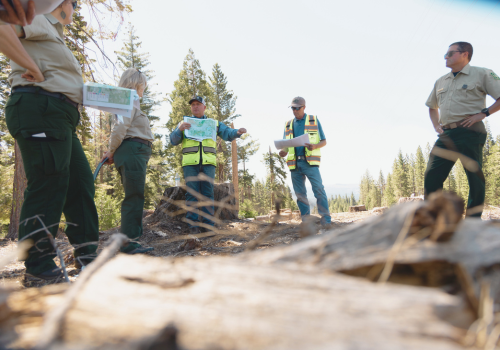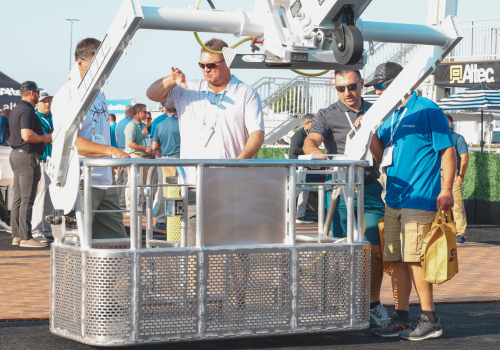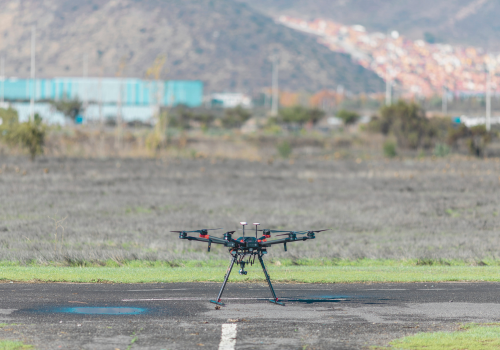As demand for horizontal directional drilling (HDD) continues to grow in the U.S. and globally, HDD equipment manufacturers have continued to expand their product lines. In many cases, it’s about breaking through barriers to new levels of power and performance. At the same time, advancements in technology have become a given as manufacturers seek to help their customers improve productivity, uptime, and serviceability.
We spoke with a few leading HDD product manufacturers to hear about their latest advancements.
Pushing the potential for power and agility
Ditch Witch’s offering of nine dirt-only models and four all-terrain models has been supplemented with a tenth and fifth. The AT120 and JT120 now represent the largest HDDs in the Ditch Witch lineup.
“Until we introduced the AT/JT120 models, our HDD lineup stopped at a 100,000-lb drill,” said Jeff Davis, Product Manager for HDD at Ditch Witch. “Plus, our largest drill at the time was a 20-year-old, aging platform that we needed to modernize. By updating that platform and also jumping into the 120,000-lb class, we can now hit the smaller end of the pipeline industry.”
Capable of handling longer bores and larger installations, the AT/JT120 each boasts 120,000 lb of thrust and pullback force. The AT version offers 15,500 ft-lb of rotational torque and 3,000 ft-lb of inner rotational torque. A 20-ft drill pipe helps limit makeup/breakout to maximize actual drilling time.
According to Davis, an all-terrain drill of this size and capability is unique. Ditch Witch refers to the AT120 as “the world’s largest all-terrain drill.” It’s also capable of drilling through solid rock formations.
“Just having that all-terrain capability can increase productivity twofold in this size class,” Davis said. “Also, contractors don’t need to run a mud motor with our AT120, unlike large drills that are not all-terrain. Those other large drills need to run larger volumes of fluid and have a larger jobsite footprint. That’s another advantage the AT120 gives contractors in this class.”
While Ditch Witch’s AT/JT120 models are a good fit for smaller pipeline projects, it’s important to note that they are also ideal in other applications like water and sewer, fiber, and underground utilities.
Maximizing performance in a compact package
Vermeer’s newest drill, the Model D24, is replacing its Model D23x30 S3 in the 24,000-lb class. Vermeer was strategic in choosing this size class to take the first step into its next generation of directional drills. The company already offers a large drill, the D550 in the 550,000-lb. class, that’s geared toward the pipeline industry. But for a broader swath of the underground utility market, contractors have been asking for a higher-performing everyday machine.
“Our new D24 is a compact machine with big capabilities,” said Clint Recker, Product Manager for Utility Drills at Vermeer. Although the D24 generates similar thrust/pullback (24,000 lb) and rotational torque (3,000 ft-lb) as the model it’s replacing, several significant improvements have been made in key areas.
“One example of where we’ve up-spec’d the new D24 is the mud pump,” Recker said. “We’ve gone from 35 gpm max flow to 45. This drill is really about productivity in soil. When you can flow more mud, you can pull the tooling faster.”
Another advancement with the new D24 is rod capacity. The D24 offers a choice of 400 or 480 ft of 2-3/8” #600 rod. With the model it’s replacing, users had to use a 2.06” rod diameter if they wanted 480 ft. “The D24 is giving customers full performance with that higher rod capacity,” Recker pointed out.
Innovations that drive operator efficiency
Recker said Vermeer’s new D24 also offers several unique features that help solve an underground utility professional’s two broader issues of labor and reliability.
First is a redesigned operator station and control system. The D24 features improved joysticks and keypads, along with a redesigned display that’s more intuitive. “It can also be used as a touchscreen if the operator prefers,” Recker said.
Another feature that helps improve ease of operation is ARE - automated rod exchange. ARE allows the operator to execute a rod changeout by simply clamping the front vice, pushing a button on the right joystick, and then pushing the ARE button on the left joystick. A computer handles the rest.
“ARE is a very intelligent system in that it’s managing the position of its components to minimize load on the threads and maximize the life of consumable parts, like the drill threads, any rods you’re taking out, and the sub-saver,” Recker explained.
With its new AT/JT120 drills, Ditch Witch has also given customers several innovative features that help improve the operator experience.
“We’ve worked hard on new software technology for this drill and this platform,” Davis pointed out. “We wanted to get away from electrical plugin-type float sensors on our carriage system that can be a nuisance to contractors. So we’ve gone to a new, simpler design with fewer moving parts to boost uptime. But the operator would never know there were no float sensors when making up their drill pipe; it’s that easy.”
Float sensors help protect drill pipe during makeup and breakout. As an alternative, Ditch Witch’s new software solution, VAM (Virtually Assisted Makeup and Breakout), helps ensure the drill pipe and tooling are at the correct levels observed by the torque gauge during tool joint makeup and breakout. That makes it easier for operators to automatically add or remove drill pipe during a bore to increase productivity.
VAM software is currently exclusive to Ditch Witch’s AT/JT120 models. Another innovation, a multimode joystick, can be found on several models of Ditch Witch directional drills, including the AT/JT120. Multimode joysticks allow operators to change a setting in the software to switch to the control pattern of another brand. This feature helps alleviate the anxiety an experienced operator may have when converting to Ditch Witch equipment.
Telematics takes uptime to another level
Another technology that is having a bigger influence on both Ditch Witch and Vermeer equipment is telematics.
Ditch Witch refers to its telematics platform as Orange Intel. Orange Intel can help utility contractors track their directional drills remotely. Davis said doing so can help contractors improve equipment performance in several ways:
Asset Tracking – monitor the location of equipment, establish geofences, and trigger alerts to know where equipment is at all times
Productivity – monitor metrics such as runtime vs. idle time, feet of product put in the ground, etc.
Uptime – monitor operating hours, machine performance, diagnostic codes, etc. to better plan maintenance schedules to minimize disruptive downtime
Vermeer’s new D24 features enhanced onboard diagnostics, which enables operators to access fault codes and other information through the machine’s touchscreen in the cab. This allows operators to run through certain diagnostic checks on their own without having to call a technician out to the jobsite.
“This goes along with our enhanced diagnostic messages,” Recker added. “We are telling operators more about what the issue is. And when applicable, we’ll give them some troubleshooting advice on things to look for and do to try and resolve the issue on their own.”
Tougher tooling adds value where it counts
When it comes to HDD tooling specifically, one leading manufacturer says the biggest advancements don’t involve jaw-dropping innovation and technology.
“It’s really about making the products more efficient and longer-lasting,” said Ben Hiler, Marketing Manager at Radius HDD, a manufacturer of rock tools, reamers, custom subs, and other types of HDD tooling.
In the case of Radius HDD, an increasingly popular approach is to use dropped carbide hardfacing. Hardfacing is when wear-resistant materials are welded onto the surface of components to extend service life. Doing this effectively without excessively driving up costs requires a deep understanding of how different tooling is being used in the field.
“When we get tools back after multiple uses, we look for wear patterns that are continuous across multiple tools,” Hiler pointed out. Radius HDD might sell a certain tool, perhaps a rock bit or cobble bit, that ends up working in several types of ground conditions. “We study them to figure out how we could add more carbide buttons or hardfacing where it can really make a difference. You can’t cover an entire tool in hardfacing because it would cost too much.”
Hiler says the trenchless utilities market has matured a lot in recent years. Many of Radius HDD’s customers have gotten to the point where they have a good understanding of what they need in certain situations, right down to shaft length, diameter, and type of teeth. But contractors still look to the expertise of Radius HDD engineers for the latest techniques to help make their tooling more productive and reliable – because productivity and reliability are the name of the game in directional drilling.
Subscribe to The Utility Expo monthly newsletter to receive more industry insights like this.
Read Next
Are Hydrovacs the Future of Excavation?


